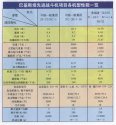FreeAsia2000
Junior Member
It does not sound like there is a lot of expertise in that article.
If you want to compare weights, the best way is to look for other Chinese air examples, because one Chinese plane is likely to be built on the same level of technology as another Chinese plane. Here you can take out national differences in construction.
Look at the FC-1. It is also made by Chengdu. It does not have a lot of composite. But it weighs only 6400kg empty. Do you think the J-10 is a lot bigger than it to justify 9750kg empty? And its not the engine, the RD-93 is only about 100-200kg lighter than AL-31FN at the most. In fact the FC-1 is slightly longer than the F-16.
Comparing the F-16 as a benchmark for weight is FLAWED. Maybe some people don't understand F-16 history. The original F-16As were coming at 7000kg empty. They were quite light, and up to this day, they are still regarded as the most agile and maneuverable variants.
But the planes were also pushed to the limits and used more strenously than the original designers expected. Many planes suffered cracks and other stress symptoms.
So the F-16C is beefed up considerably and in return, the empty weight went up to 8500kg for the PW engine version and 8800kg for the GE engine version. But the same time, the requirements now call for an exhaustive 8,000 flight hour life (some say 12,000 hours), at least before one major overhaul. Although the Russians have a different standard for "overhaul", a Russian plane is about 2000 flight hours (Su-27 as an example) before it commits to the Russian definition of overhaul.
I don't think the J-10 is overbuilt to the same extent as the F-16C. The airframe would probably exceed the Russian service pattern but won't meet the same stringent Western requirements. More like somewhere in between. The standards the Chinese set to themselves seems long enough to last for their purposes, such as we have seen with the J-8II examples. But the Chinese also don't involve in various global cop campaigns the US does, or forsee themselves in bombing genocidal dictators or terrorist harboring countries, so they don't have any reason for the overengineering.
Prior to the US-Vietnam war it was believed that dog-fighting would be a thing of the past. However the USAF realised that this prediction was seriously flawed after a number of engagements.
Hence the early F-16 was designed as a dog-fighter. Obviously as time
passed the F-16 became more multi-role and hence became heavier.
Service life may thus reflect the increasing requirements on the F-16 and
not the role for which it was originally designed


